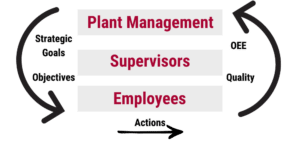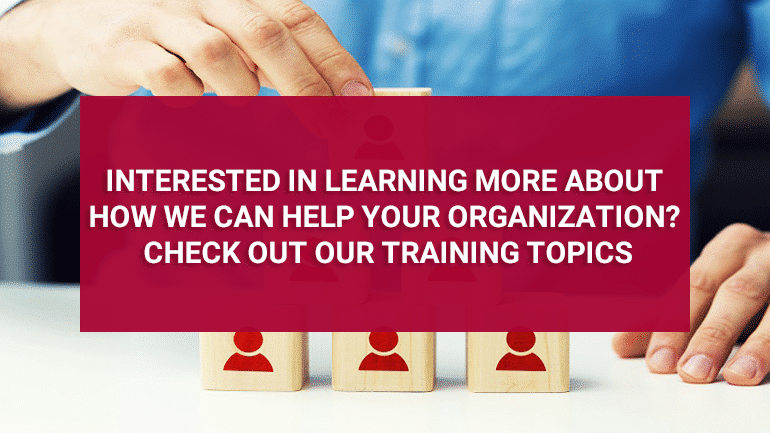Imagine a manufacturing plant plagued by delays, defects, and frustrated employees. Suddenly, a transformation takes place. Processes become streamlined, quality improves, and workers are engaged and empowered. This is not magic; it is the power of Lean and Continuous Improvement.
Lean and continuous improvement are tools to enhance operational efficiency, quality, and employee morale. While often associated with modern manufacturing, the roots of Lean thinking can be traced back to the 1800s, when shipbuilders sought efficient production methods. The core concepts were further developed by visionaries like Dr. Williams Edwards Deming, whose profound knowledge system revolutionized quality management.
Lean is not just about cost-cutting; it is about creating a sustainable culture of improvement where every employee is engaged and empowered to contribute to the organization’s success.
Lean and continuous improvement expert Vaidesh Subramanyam recently shared his insights on the Accelerating Operational Performance podcast. Tune in to discover how a human-centric approach to Lean can take your organization to another level. You can watch the episode here or listen to it here.
Understanding the Core Concepts of Lean and Continuous Improvement
To truly harness the power of Lean, we need to understand its core concepts. This involves understanding the principles of Lean thinking, the essence of continuous improvement, and most importantly—as Vaidesh says, the human element.
The Principles of Lean Thinking
Lean thinking revolves around five core principles:
- Value: Defining value from the customer’s perspective. What are they willing to pay for? Everything else is considered waste.
- Value Stream: Identifying all the steps involved in delivering value to the customer and eliminating those that don’t add value.
- Flow: Ensuring a smooth and continuous flow of value creation, eliminating bottlenecks and delays.
- Pull: Producing goods or services only when they are needed by the customer, minimizing inventory and waste.
- Perfection: Continuously striving for perfection by eliminating all forms of waste and optimizing processes.
Think of a bicycle factory example, value is defined as delivering a high-quality, durable bicycle to the customer on time and at a competitive price.
The value stream encompasses all the steps involved in producing the bicycle, from sourcing raw materials like steel and aluminum to assembling the final product, including design, fabrication, painting, and quality control.
Flow means ensuring a smooth and efficient production process, where parts and materials move seamlessly through the factory without delays or bottlenecks. This might involve optimizing the factory floor layout, implementing standardized work procedures, and using visual management tools to track progress.
Pull involves producing bicycles only when customer orders exist, minimizing the need to store finished goods inventory. This could involve using a Kanban system to signal demand for parts and materials at each production stage.
Finally, perfection requires continuously striving to improve the bicycles’ quality, durability, and performance while reducing waste and optimizing the production process. This might involve implementing quality control checks at each production stage, seeking customer feedback, and using data analysis to identify areas for improvement.
The Essence of Continuous Improvement
Continuous improvement is the heartbeat of Lean. Vaidesh explains it is about constantly seeking ways to improve processes, eliminate waste, and enhance value. The Plan-Do-Check-Act (PDCA) cycle is a fundamental tool for driving this:
- Plan: Identify an opportunity for improvement and develop a plan.
- Do: Implement the plan on a small scale.
- Check: Analyze the results and identify what worked and what did not.
- Act: Implement the improved solution on a larger scale and standardize the new process.
Kaizen, a Japanese business philosophy that encourages continuous improvement involving employees at all levels of a company, emphasizes small, incremental improvements driven by employee involvement. By empowering employees to identify and solve problems, organizations can create a culture of continuous improvement.
The Human-Centric Approach
“So if you go back and look at the Toyota production system documentation, what we will find is that two fundamental values are the following. First, respect for people. And second, focus on continuous improvement, in that order.”
Lean and continuous improvement is not just about processes and tools; it is about people. Treating employees as valuable assets and empowering them to contribute is essential for success. This involves:
- Respect for people
- Employee involvement
- Teamwork
- Leadership commitment
Key Insight: Lean and Continuous Improvement is built on five core principles: value, value stream, flow, pull, and perfection, all focused on maximizing value for the customer.
Strategy: Implement the PDCA (Plan-Do-Check-Act) cycle and Kaizen principles to foster a culture of continuous improvement driven by employee involvement.
Impact: By embracing a human-centric approach that values and empowers employees, organizations can achieve sustainable improvements in efficiency, quality, and customer satisfaction.
Common Misconceptions and Challenges in Implementing Lean and Continuous Improvement
While Lean and continuous improvement offer tremendous potential, several misconceptions and challenges can hinder successful implementation. Here are some of the most common hurdles organizations face.
“If I look at lean, OPEX, CI, purely from a cost-cutting point of view, there is no incentive for anyone to improve after the target is reached.”
The Myth of Cost-Cutting as the Primary Goal
Vaidesh states that one common misconception is that Lean and continuous improvement is primarily about cost-cutting. While reducing costs is certainly a benefit, it should not be the sole focus. Focusing solely on cost reduction can lead to short-sighted decisions that ultimately harm quality, customer satisfaction, and employee morale.
We need to view Lean and continuous improvement as a holistic approach to enhancing overall business performance. This includes improving quality, increasing efficiency, reducing lead times, and enhancing customer satisfaction.
The Challenge of Sustaining Gains
Achieving initial improvements is often easier than sustaining those gains over the long term. Organizations may experience initial enthusiasm and quick wins, but then struggle to maintain momentum.
To create a sustainable culture, organizations need to:
- Make Lean thinking a way of life, not just a one-time project. You want to embed Lean principles into daily operations.
- Continuously train and develop your employees with the skills and knowledge to identify and solve problems.
- Regularly monitor key performance indicators (KPIs) to measure the effectiveness of Lean initiatives.
- Acknowledge and reward employees for their efforts, successes, and contributions to driving continuous improvement.
- Encourage experimentation and embrace continuous learning to adapt to changing circumstances.
“In my work, I prevent managers from going and solving problems at the frontline level, because you take the respect away from the team members.”
The Importance of Leadership Commitment
In order for Lean and continuous improvement initiatives to be successful, Vaidesh emphasizes the need for leadership buy-in. Without top-level support, such initiatives often fail due to a lack of clear direction, insufficient resources, or resistance to change. Leaders need to:
- Clearly communicate the vision and goals by explaining why Lean is important and how it aligns with the organization’s strategic objectives.
- Provide resources and support, which can include time, budget, and training, to support Lean initiatives.
- Empower employees by delegating decision-making authority.
- Demonstrate a commitment to Lean principles in their own work and behavior—lead by example.
Key Insight: Lean is not just about cost-cutting, but rather a holistic approach to improving overall business performance, including quality, efficiency, and customer satisfaction.
Strategy: To sustain gains from Lean initiatives, organizations need to embed Lean principles into their culture, continuously train employees, track progress, and foster a learning environment.
Impact: Strong leadership commitment is necessary for successful Lean implementation, as leaders need to communicate the vision, provide resources, empower employees, and lead by example.
Effective Strategies for Successful Lean and Continuous Improvement Implementation
Looking for a strategy? Vaidesh shares some key strategies to guide your organization on its Lean journey.
Empowering Employees at All Levels
Lean and continuous improvement thrives on employee involvement. To create a culture of continuous improvement, you need to empower employees at all levels to identify and solve problems. This means providing them with the necessary training, tools, and authority to make decisions and implement improvements.
And also creating a safe environment where employees feel comfortable speaking up, sharing ideas, and taking ownership of their work.
The Significance of Hands-On Learning and Continuous Improvement
The significance of hands-on learning and continuous improvement cannot be emphasized enough. It is essential to go beyond theoretical knowledge and engage in practical application to truly grasp the concepts and achieve tangible results.
The Importance of Active Management and Ownership
Another crucial element is active management, wherein team members closest to the work are empowered to take ownership of their respective areas. This not only promotes accountability but also fosters a sense of responsibility among team members, encouraging them to actively seek ways to enhance the work.
Utilizing the Hoshin Process for Goal Alignment
To ensure that everyone is on the same page and working towards common goals, Vaidesh says the Hoshin process can be instrumental. This methodology involves translating top-level goals down to every level of the organization, ensuring that each team member understands their role in contributing to the overall success of the company. Regular feedback and communication are vital components of this process, allowing for adjustments and refinements along the way.
“This is where I start with my clients. I use the Hoshin process, a very, very powerful thought process, where starting with the CEO, the president, and the board members, they decide I have to go from where I am to two times X, whatever the X is.”
Prioritizing Important Tasks Over Urgent Ones
In the pursuit of continuous improvement, it is crucial to prioritize important tasks over urgent ones. While urgent tasks may demand immediate attention, it is often the important tasks that contribute to long-term success. By focusing on the important, organizations can avoid getting caught up in the “tyranny of the urgent” and instead work towards sustainable improvements.
Key Insight: Empowering employees, fostering hands-on learning, promoting active management, utilizing the Hoshin process, and prioritizing important tasks are crucial strategies for successful Lean implementation.
Strategy: Create a culture where employees are empowered to identify and solve problems, encourage hands-on learning and active ownership, use the Hoshin process to align goals, and prioritize important tasks over urgent ones.
Impact: By implementing these strategies, organizations can foster a culture of continuous improvement, enhance employee engagement, and achieve sustainable operational excellence.
The Journey to Operational Excellence
Lean and continuous improvement is a powerful approach to achieving operational excellence, enhancing quality, and fostering a culture of continuous improvement. By understanding the core principles, addressing common misconceptions, and implementing effective strategies, organizations can thrive.
The journey towards Lean and continuous improvement is ongoing. It requires commitment, dedication, and a willingness to embrace change. But the rewards are well worth the effort. By continuously striving for improvement, organizations can achieve sustainable growth, enhance customer satisfaction, and create a more fulfilling work environment for their employees.
Ready to embark on your Lean and continuous improvement journey? Take the first step today! Assess your current processes, identify areas for improvement, and empower your employees to drive positive change. If you need help along the way, you can get a hold of Vaidesh through LinkedIn. Remember, continuous improvement is a marathon, not a sprint. Embrace the journey, celebrate successes, and never stop striving for excellence.
Did you enjoy this blog?
Here are some related topics that you may find interesting:
Dr. Dawn-Marie Turner: A Deep Dive into A Readiness Mindset
Ken Romine: The Core Principles of Effective Operational Leadership
Chris Taylor: Driving Behavior Change with the Actionable Platform
William El-Khouri: Achieving Operational Excellence Through Resilient Leadership

